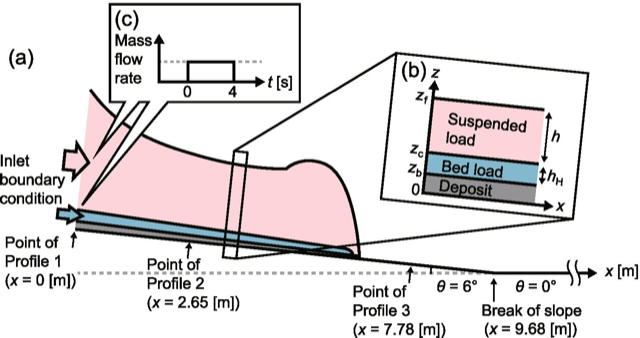Validation of a two‑layer depth‑averaged model by comparison with an experimental dilute stratified pyroclastic density current

Shimizu H. A., T. Koyaguchi, Y.J. Suzuki, E. Brosch, G. Lube, & M. Cerminara (2021).
Bulletin of Volcanology, doi:10.1007/s00445-021-01493-w
Abstract
Numerical results of a two-layer depth-averaged model of pyroclastic density currents (PDCs) were compared with an experimental PDC generated at the international eruption simulator facility (the Pyroclastic flow Eruption Large-scale Experiment (PELE)) to establish a minimal dynamical model of PDCs with stratification of particle concentrations. In the present two-layer model, the stratification in PDCs is modeled as a voluminous suspended-load layer with low particle volume fractions (≲10−3) and a thin basal bed-load layer with higher particle volume fractions (∼10−2) on the basis of the source condition in the experiment. Numerical results for the suspended load quantitatively reproduce the time evolutions of the front position and flow thickness in the experimental PDC. The numerical results of the bed-load and deposit thicknesses depend on an assumed value of settling speed at the bottom of the bed load (WsH). We show that the thicknesses of bed load and deposit in the simulations agree well with the experimental data, when WsH is set to about 1.25×10−2 m/s. This value of the settling speed is two orders of magnitude smaller than that predicted by a hindered-settling model. The small value of WsH is considered to result from decreasing in the effective deposition speed due to the erosion process accompanied by saltating/rolling of particles at the bottom of the bed load.


Devi effettuare l'accesso per postare un commento.